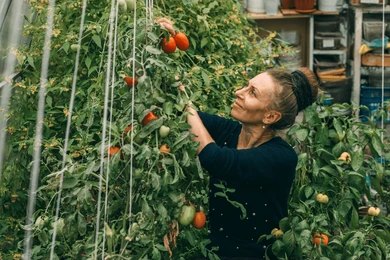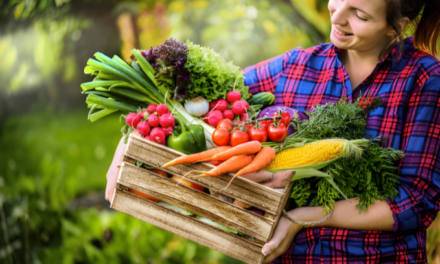Growing vegetables in your garden can be both a rewarding and fun experience. If you’re just starting, it can seem overwhelming, but with a little guidance and planning, you can enjoy a thriving garden full of fresh produce. Whether you have a small backyard or a spacious plot, here are some best practices for beginners to help you get started.
Choose the Right Vegetables for Your Region
The first step in growing vegetables is selecting the right crops for your climate. Some vegetables thrive in cool temperatures, while others prefer the warmth. Consider your local growing zone and the time of year. Common beginner-friendly vegetables include:
- Tomatoes (warm season)
- Lettuce (cool season)
- Carrots (cool season)
- Peppers (warm season)
- Cucumbers (warm season)
- Spinach (cool season)
Check with your local garden center or use an online planting guide to determine the best vegetables for your area and the growing season.
Prepare Your Garden Soil
Healthy soil is the foundation of a successful vegetable garden. Start by testing the soil’s pH level to ensure it’s within the ideal range for your chosen plants (generally between 6.0 and 7.0).
To prepare the soil:
- Remove weeds: Weeds compete for nutrients and water, so clear your garden bed of any weeds.
- Amend the soil: Add compost, well-rotted manure, or other organic matter to enrich the soil with nutrients. This will also improve drainage and aeration.
- Loosen the soil: Use a garden fork or tiller to loosen the soil to a depth of 6-8 inches to allow plant roots to grow deep.
Plan Your Garden Layout
Good garden planning can make a big difference in the health and productivity of your crops. Consider spacing and sunlight requirements. Follow these tips:
- Rows or Raised Beds: If you’re planting directly in the ground, arrange plants in rows. Raised beds are ideal for those with poor soil or limited space.
- Companion Planting: Some plants grow better when paired with others. For example, planting basil next to tomatoes can improve flavor and reduce pests.
- Spacing: Make sure to give each plant enough space to grow. Check seed packets for proper spacing recommendations.
Watering Wisely
Watering is one of the most important aspects of vegetable gardening. Plants need consistent moisture to grow but not too much. Here’s how to water your garden effectively:
- Water deeply: Instead of frequent shallow watering, aim to water deeply to encourage root growth.
- Early mornings: Water your plants early in the day to avoid evaporation and allow the leaves to dry before nightfall, reducing the risk of disease.
- Mulch: Apply a layer of mulch around your plants to retain moisture, reduce weeds, and regulate soil temperature.
Fertilize Regularly
Vegetables are heavy feeders, meaning they need plenty of nutrients to grow strong and healthy. Organic fertilizers or compost can provide your plants with the nutrients they need throughout the growing season.
- Start early: Fertilize your plants when you transplant them into your garden or after they germinate.
- Feed throughout the season: As your plants grow, continue to fertilize them at regular intervals based on the type of vegetable and its growth cycle.
Control Pests and Diseases Naturally
Pests can be a common problem for vegetable gardeners, but there are natural methods to control them without relying on harmful chemicals. Try these organic solutions:
- Hand-pick pests: Inspect your plants regularly for signs of pests and remove them by hand.
- Use natural predators: Encourage beneficial insects like ladybugs, which eat aphids, or release nematodes to control soil-borne pests.
- Companion planting: Certain plants can deter pests. For example, planting marigolds around your vegetables can help keep aphids away.
- Neem oil: This natural pesticide can be sprayed on plants to control a variety of insects.
Harvest at the Right Time
Harvesting your vegetables at the right time ensures the best flavor and nutrient content. Here’s how to know when to pick:
- Look for maturity signs: Each vegetable has its own maturity timeline. Check the seed packet for expected harvest times.
- Pick early and often: Harvesting regularly encourages more growth, especially with crops like beans and zucchinis.
- Don’t wait too long: Some vegetables, like lettuce, can become bitter or tough if left too long. Keep an eye on them and harvest as soon as they reach their peak.
Stay Consistent and Keep Learning
Gardening is a journey, and you’ll learn more with each season. Stay patient and persistent, as it takes time to develop a successful garden. Take notes on what works and what doesn’t, and don’t be afraid to ask for advice from local gardeners or community gardening groups.
Conclusion
With these best practices, you’ll be well on your way to growing healthy, delicious vegetables in your garden. Remember, gardening is a process, so take it step by step and enjoy the journey. With a little care and attention, your garden will reward you with bountiful harvests that are both satisfying and nutritious.
Happy gardening!











